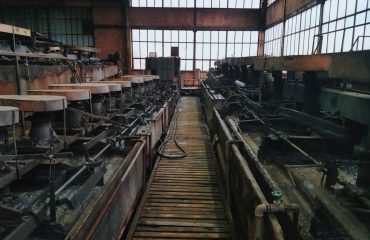body { font-family: sans-serif; line-height: 1.6; }
h1, h2, h3 { color: #333; }
h1 { font-size: 2.5em; }
h2 { font-size: 2em; }
h3 { font-size: 1.5em; }
The steel industry is a dynamic market, constantly fluctuating in price and availability. Choosing the right procurement strategy is crucial for businesses relying on steel as a raw material. This often boils down to a critical decision: should you opt for the flexibility of spot contracts or the stability of long-term agreements? This comprehensive guide breaks down the advantages and disadvantages of each, helping you determine which approach best aligns with your business goals.
Understanding Spot Steel Contracts: Riding the Price Waves
Spot contracts involve purchasing steel on the open market, at the prevailing price, for immediate or near-term delivery. This approach offers significant flexibility, allowing businesses to react quickly to changes in demand and price fluctuations. You only buy what you need, when you need it. However, this flexibility comes at a cost.
Advantages of Spot Contracts:
- Flexibility: Adjust your purchases based on real-time market conditions and project needs.
- Price responsiveness: Benefit from lower prices if the market dips.
- Reduced inventory costs: Only purchase the steel you need, minimizing storage and holding costs.
Disadvantages of Spot Contracts:
- Price volatility: Exposure to significant price swings can impact profitability.
- Supply chain risks: Potential for shortages or delays due to market fluctuations.
- Transaction costs: Frequent procurement requires more administrative overhead.
- Lack of guaranteed supply: No assurance of consistent steel availability.
Long-Term Steel Contracts: Securing Stability and Predictability
Long-term steel contracts involve agreeing on a fixed price or pricing formula for a specified quantity of steel over a defined period (e.g., one year, three years). This approach provides stability and predictability, minimizing the risk of price volatility.
Advantages of Long-Term Contracts:
- Price stability: Protection against price increases, providing budget certainty.
- Guaranteed supply: Secure a consistent supply of steel, mitigating supply chain disruptions.
- Improved planning: Facilitates better production planning and forecasting.
- Stronger supplier relationships: Develop closer ties with suppliers, potentially leading to preferential treatment.
Disadvantages of Long-Term Contracts:
- Price inflexibility: May miss out on potential price drops in the market.
- Commitment risks: Tied to a specific supplier and quantity for the contract duration.
- Inventory management challenges: Potential for overstocking if demand fluctuates.
- Contract negotiation complexity: Requires careful negotiation to ensure favorable terms.
Analyzing Your Steel Requirements: Finding the Right Fit
The optimal choice between spot and long-term contracts depends heavily on your specific business needs. Consider these factors:
- Production volume and consistency: High and consistent demand may favor long-term contracts.
- Risk tolerance: Higher risk tolerance might lean towards spot contracts, while risk aversion favors long-term agreements.
- Market volatility: In highly volatile markets, long-term contracts offer greater protection.
- Storage capacity: Adequate storage is essential for managing inventory under long-term contracts.
- Financial resources: Long-term contracts often require upfront commitments.
Hybrid Approach: Balancing Flexibility and Stability
Many businesses adopt a hybrid approach, combining elements of both spot and long-term contracts. This strategy allows them to secure a portion of their steel needs through long-term agreements for stability, while utilizing spot contracts for flexibility in meeting fluctuating demand or taking advantage of market dips.
This approach requires careful planning and monitoring of market conditions to ensure optimal balance between risk and reward. It’s often beneficial to work with a steel procurement specialist to help navigate this complexity.
Negotiating Favorable Steel Contracts: Key Considerations
Regardless of whether you choose spot or long-term contracts, effective negotiation is crucial. Key considerations include:
- Clearly defined terms and conditions: Ensure complete clarity on pricing, quantities, delivery schedules, and payment terms.
- Price adjustment mechanisms: Incorporate clauses addressing potential price fluctuations in long-term contracts.
- Dispute resolution mechanisms: Include processes for resolving disagreements or disputes.
- Supplier reliability and reputation: Thoroughly vet potential suppliers to ensure they are capable of meeting your needs.
- Market analysis: Stay informed about market trends to make informed decisions.
By carefully considering these factors and understanding the nuances of spot and long-term steel contracts, businesses can make informed procurement decisions that optimize their operations and enhance their bottom line.
Tags: spot steel contracts, long-term steel contracts, steel procurement, steel pricing, steel supply chain




